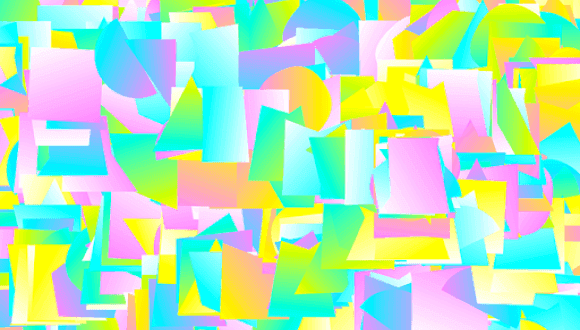
Computer Generated Art
Computational techniques and concepts of randomness create autonomous artworks.
Computer Generated Art, often shortened to Generative Art, is an artform which uses computational techniques and concepts of randomness to create autonomous artworks. Autonomy, in this context, means that the artist cannot completely predict the outcome of their own artwork. Pioneered by artists such as Peter Struycken and Vera Molnar in the 1960s, generative art made a resurgence in the 1980’s and 1990’s with the introduction of the World Wide Web and an interest in artificiality in postmodern times. Today’s artists often scrape information from social media platforms to fuel their generative artworks.
Using the computational strength of their computer code, generative artists embrace the chaos of randomness in their work. By embracing this randomness the artist can create a nearly infinite number of outputs from just a few lines of code. They can write computer code in order to let the machine paint for them or allow the computer to scrape social media and pick a canvas from millions of uploaded images. Generative art is often influenced by mathematical concepts such as the cellular automaton or biological ideas such as evolution. In this way artists often lay bare that the natural world can be as random as a computer generated image.
These works often rely on external databases or user input, which a fixed algorithm then alters for a given final effect. External dependencies, such as these, make these works difficult to preserve using more traditional methods, such as web archiving, as their meaning often derives from the inherent changeability the dependency grants.
Even though the definitions of generative art often differ there are always a few aspects that always return. Every generative artwork depends on a certain unpredictability, uniqueness and a surprise factor. Another often recurring aspect is that of endlessness; an artist can turn their machine on or let their computer code run indefinitely and every single outcome will be different every time. For this reason we also listed artworks using in- or output with a link to social media and artworks relying on other external dependencies in this category.
To deepen the understanding of these works LI-MA uses case study based research. One case, representative of a larger number of artworks, is used to determine methods for finding solutions to similar challenges and questions.
Questions raised by generative art works included:
- What is acquired and transferred?
- How can the artwork be exhibited in the future?
- How to present an artwork in which the outcome is different every time?
- What is considered the artwork in generative art?
- Do you preserve the computer code or do you also preserve all the outcomes of the generative procedure?
- How can knowledge concerning the maintenance of the work be transferred?
- How to preserve a work that relies on an external third party dependency?










